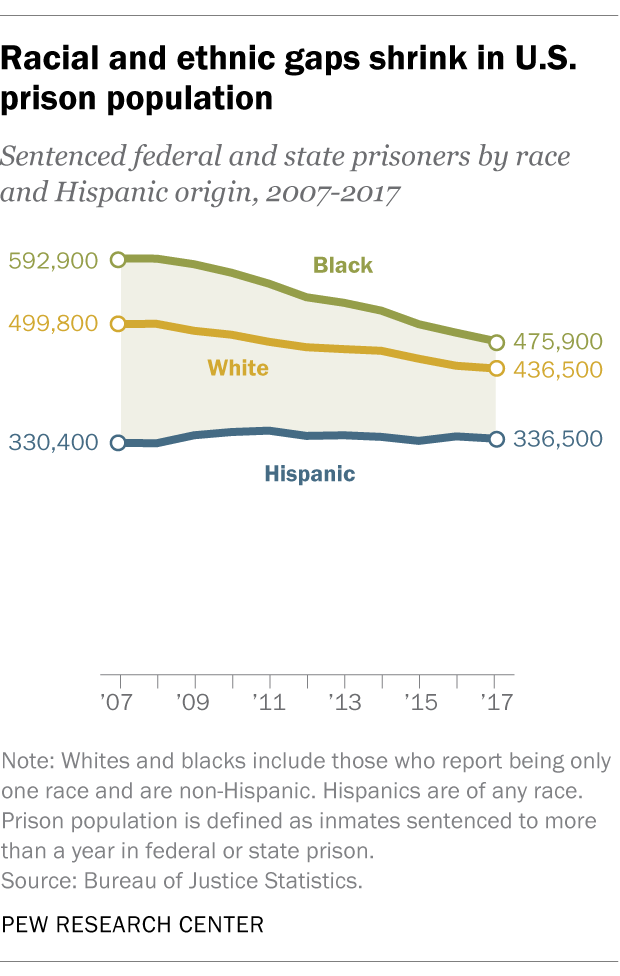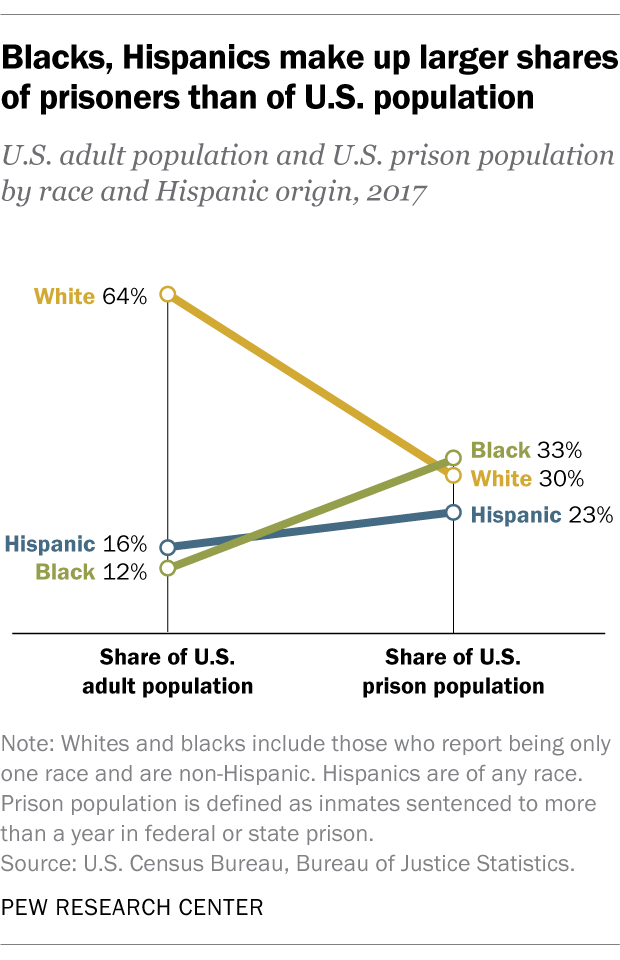Note: For newer data on imprisonment rates, please see this 2020 post.
Blacks have long outnumbered whites in U.S. prisons. But a significant decline in the number of black prisoners has steadily narrowed the gap over the past decade, according to new data from the Bureau of Justice Statistics.

At the end of 2017, federal and state prisons in the United States held about 475,900 inmates who were black and 436,500 who were white – a difference of 39,400, according to BJS. Ten years earlier, there were 592,900 black and 499,800 white prisoners – a difference of 93,100. (This analysis counts only inmates sentenced to more than a year.) The decline in the black-white gap between 2007 and 2017 was driven by a 20% decrease in the number of black inmates, which outpaced a 13% decrease in the number of white inmates.
The gap between white and Hispanic imprisonment also narrowed between 2007 and 2017, but not because of a decrease in Hispanic prisoners. Instead, the number of white prisoners fell while the number of Hispanic inmates increased slightly. At the end of 2017, there were 100,000 more white inmates than Hispanic inmates (436,500 vs. 336,500), down from an inmate difference of 169,400 in 2007 (499,800 white inmates vs. 330,400 Hispanic inmates).
Overall, there were 1,439,808 sentenced prisoners in the U.S. at the end of 2017, or about 6% fewer than the 1,532,851 at the end of 2007. Apart from blacks, whites and Hispanics, these totals include inmates from other races and those from mixed racial and ethnic backgrounds. The figures only count people in federal and state correctional facilities, including those held in privately run prisons that contract with the government; they exclude most inmates held in locally run jails.

The racial and ethnic makeup of U.S. prisons continues to look substantially different from the demographics of the country as a whole. In 2017, blacks represented 12% of the U.S. adult population but 33% of the sentenced prison population. Whites accounted for 64% of adults but 30% of prisoners. And while Hispanics represented 16% of the adult population, they accounted for 23% of inmates.
Another way of considering racial and ethnic differences in the nation’s prison population is by looking at the imprisonment rate, which tallies the number of prisoners per 100,000 people. In 2017, there were 1,549 black prisoners for every 100,000 black adults – nearly six times the imprisonment rate for whites (272 per 100,000) and nearly double the rate for Hispanics (823 per 100,000).
For all three of these groups, imprisonment rates have declined substantially since 2007. The rate has declined 31% among blacks, 14% among whites and 25% among Hispanics. Experts have offered a range of explanations for the pronounced drop in the black imprisonment rate.
Note: This is an update of a post originally published on Jan. 12, 2018.
